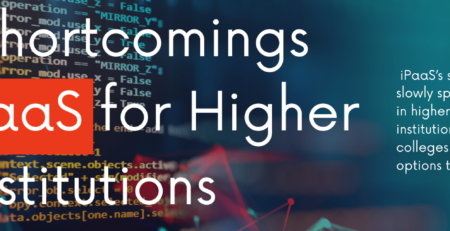5 Cybersecurity Challenges Most Community Colleges in the US
Cybersecurity threats have become a major problem for higher ed institutions, particularly community colleges in the US. These relatively smaller institutions generally have smaller campuses and classrooms, different degree programs, lower tuition costs, and more financial aid programs.
One major difference most people overlook is that community colleges have a modest IT infrastructure compared to their larger counterparts. Some think the size difference is justified considering colleges store much more data from students, administration, and faculty. However, it’s not just about the size but also about the quality of the infrastructure in terms of functionality and security.
Today, community colleges are at greater risk of becoming easy targets for hackers, scammers, and other malicious criminals. As a result, many campuses actively seek to introduce a solid mix of solutions to protect all their touchpoints.
However, to do so, they first need to learn about the biggest Cybersecurity challenges for community colleges and design their Cybersecurity infrastructures accordingly.
The Biggest Cybersecurity Challenges for Community Colleges in the US
1. Obsolete Software & Data Management Solutions
Many community colleges in the US use outdated software and data management solutions, which puts their infrastructure at great risk of attacks. Regardless of the size of your college, you need to have sufficient cybersecurity protection in place. For instance, you need to hire IT security professionals or a third-party service to monitor your infrastructure and respond to threats.
In many cases, colleges have the right solutions in place, but they are either unpatched or outdated. Patching is essential for avoiding breaches. In 2021, the University of Colorado Boulder experienced one of the biggest attacks in colleges, revealing information (name, ID numbers, contact, etc.) of nearly 30,000 students (current and alumni) and employees.
This attack happened simply because the college didn’t patch its Atlassian software in time.
2. Outdated Hardware
As surprising as this may appear, not all Cybersecurity challenges in community colleges are software-related. In many cases, software solutions and updates are simply not compatible with the hardware installed to run them.
As a result, outdated hardware is one of the leading causes of cyberattacks as it stops IT teams and other departments from using the latest software versions of security solutions and other applications.
3. IoT Attacks
Many community colleges in the US use IoT devices for different applications, including online learning, campus security, attendance taking, workflow automation, and energy conservation. Like most electronic devices connected to the internet, most IoT devices are highly susceptible to cyberattacks and failure.
Many hackers also use these devices as backdoors to other systems since they’re usually connected to the same network. Fortunately, there are many ways to prevent IoT devices from getting hacked. For instance, you can employ multi-factor authentication during login or use a virtual private network (VPN) to secure your network.
4. Insider Attacks
In many cases, cyberattacks in community colleges can be instances of an inside job. Unfortunately, employees are capable of malicious practices. Depending on their skill levels, they can steal money, export confidential data, or disrupt operations for personal gain.
Therefore, many colleges are employing a zero-trust security approach to add several layers of security checks to maximize visibility. Some are also segregating their databases and applications to close vulnerability gaps.
5. Phishing
Phishing is one of the most popular Cybersecurity threats in the market today. Many hackers pose as trusted entities, such as college students, employees, or departments, to trick users into providing personal information, such as credit card numbers, account passwords, and social security numbers. They gain access in many ways, like filling out college applications or Zoom meeting intrusions.
For many community colleges, these attacks can be difficult to identify and recover from since they also involve hundreds or even thousands of students and employees. Therefore, there’s an increasing need for automated solutions to detect threats at different touchpoints where phishing and similar social engineering attacks are most likely to occur.
Conclusion
As mentioned earlier, community colleges should secure every touchpoint of the student lifecycle. One of the most important and vulnerable touchpoints is the admission phase. This touchpoint attracts the savviest scammers looking to steal financial aid money and other funds using fraudulent student applications.
S.A.F.E is the world’s first and only solution for real-time fraud detection. You can use it to improve and secure your enrollment process and stop criminals from accessing your systems. S.A.F.E can also help reduce phishing scams by detecting and reporting fake .edu emails.
Get in touch with AMSA Connect to learn more about this game-changing solution.












Leave a Reply